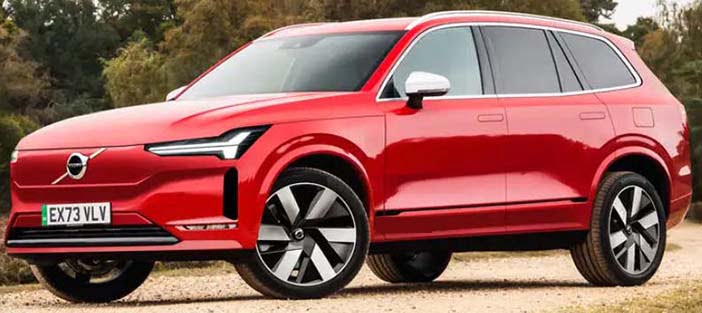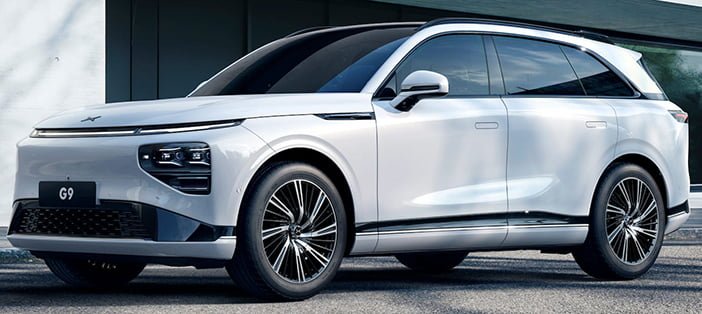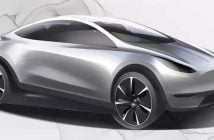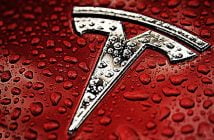+++ Buying a used car can be a daunting experience, even if you’re in the market for a W16 powered BUGATTI . The company is giving customers valuable peace of mind by launching a certified pre-owned program for the Veyron and the Chiron that includes a 1-year warranty plan. The firm explains that the cars eligible for the certified pre-owned label “exhibit the incomparable quality expected of the Bugatti macaron”. There’s no word yet on how Bugatti and its technicians decide if a car is eligible to join the certified pre-owned program, though it likely involves a series of comprehensive inspections. Bugatti’s certified pre-owned cars come with a 1-year warranty plan, but what it covers depends on the model selected. For the Chiron, it includes all parts and labor for mechanical, electrical, corrosion-, and paint-related repairs. For the Veyron, it covers parts and labor for mechanical and electrical repairs. It’s valid worldwide, so you’re covered if you buy a Chiron in Utah and ship it to Italy for a road trip. Enthusiasts who buy a certified pre-owned Bugatti will also receive a free annual service that needs to be performed within one year of the purchase date. And, every authorized Bugatti dealer can sell certified pre-owned cars, so the program will include a wide selection of cars. Bugatti isn’t the only high-end company that offers a certified pre-owned program. Lamborghini, Ferrari, and Rolls-Royce operate similar programs. Many of these companies are sitting on a full order book, so investing in used-car sales makes sense from a business standpoint. +++
+++ FORD is restructuring its vehicle development and supply chain operations, shuffling multiple executives just days after announcing that it would build up to 45.000 vehicles with parts missing due to shortages. The Dearborn, Michigan, automaker gave some executives new roles and said that its chief financial officer will begin reworking supply chain operations until a new global purchasing chief is hired. The changes arrive at a time of profound change for Ford and the auto industry, which for more than a century have made a living by selling petroleum-powered vehicles. The company has plans for half of its global production to be electric vehicles by 2030, but like its main competitors, Ford will need to keep selling gas-burning vehicles to fund the massive transition. Earlier this year, CEO Jim Farley split the company into 2 units, ‘Ford Model e’ to develop electric vehicles, and ‘Ford Blue’ to handle internal combustion cars, trucks and SUVs. Early Thursday, Ford announced that CFO John Lawler would run a makeover of its supply chain operations until the company finds a new supply chain chief. Doug Field, who was hired from Apple Inc., will now become chief advanced product development and technology officer. He’ll lead vehicle design and hardware engineering, and continue duties overseeing electric vehicles, software and digital systems, and driver assistance systems. Former chief operating officer Lisa Drake, now vice president of EV industrialization, takes on manufacturing engineering as Ford plans to produce EVs at a rate of 2 million per year by the end of 2026. +++
+++ This year marks the end of the HONDA NSX as we know it. Its swan song, the 600-horsepower 2022 Type S, saw only 300 made for the U.S. market, and all of them sold out in 24 hours. It’s barely disappeared over the horizon, but Honda is already previewing the NSX’s third act. Speaking with Nikkei Asia, Jon Ikeda was asked whether a third generation NSX was forthcoming. “I would bet on it”, he said. Ikeda also predicted that if the wager lands in his favor, “it’s going to be all-electric”. This falls in line with statements Ikeda made a year ago. At the time, he said Honda wants to make a statement: The first generation was Honda’s vision for an F1-derived petrol-powered supercar; the second generation arrived as an affordable hybrid halo car in the age of gasoline-electrics. He didn’t elaborate on the third generation’s powertrain back then, but this time Ikeda was more adamant about electric power. Part of Ikeda’s certainty, the article states, comes from global CEO Toshihiro Mibe’s commitment to electrify Honda’s line-up. Soon after taking the top job in April 2021, Mibe announced plans to convert Honda’s entire line-up to EVs and hydrogen fuel cell vehicles by 2040. As for what kind of car an electric NSX would be, Ikeda has some ideas. “It won’t be just about straight lines”, he told Nikkei Asia. Blistering acceleration is already common in the electric supercar world, so Honda would need to bring something novel to the table. Ikeda wants the NSX to be a technological showcase for ultimate handling as well, something the outgoing NSX did with its driver-focused Super Handling AWD system. I’ve long bemoaned how the new breed of electrified supercars have incredible specs on paper, but somehow don’t feel as engaging to drive. That’s a niche Honda could fill. In the often contentious give and take between American Honda and Honda Motor’s engineering departments, the Japan mothership tends to win out. However, these days Honda barely sells anything beyond kei cars in Japan. It’s up to leaders like Ikeda and those who understand the U.S. market to drag the company toward the performance-minded engineering philosophies Old Man Soichiro founded his business on. +++
+++ Arnold Schwarzenegger’s wishes will come true, and soon. MERCEDES chairman Ola Källenius stated in a media roundtable today that an electric G-Class will launch in mid to late 2024. And from Källenius’ description, it sounds like a blast to drive. Källenius said he went for a drive in a prototype late last fall, and it was probably the most fun he had all year. He sampled it at Mercedes’ testing facility in Graz, Austria, where the internal combustion G-Class is traditionally put through its paces, testing angles, wading depths, etc. The drive had him convinced: “From now on, going off-road is electric”. It’s a change of track from a few years ago, when the fate of the G-Class was in the air. “In the past, there were discussions whether we should eliminate the model. The way I see things now, I’d say the last Mercedes to be built will be a G-Class”, Källenius said in a speech in 2019. But as Mercedes goes all-electric by 2030, ditching the internal combustion engine is a prerequisite to the G-Class’ survival. We don’t know yet if the G will follow the naming structure of Mercedes’ other electric models, which would likely make it the EQG. When initially asked about timing, Källenius first stated that the electric off-roader would be “coming to a theater near you soon”. That might have simply been a figure of speech, but we wouldn’t be surprised if the electric G Wagen did make a debut appearance in some action movie. Schwarzenegger would approve. +++
+++ TESLA has issued a recall for nearly 1.1 million vehicles due to window automatic reversal system that may not react correctly after detecting an obstruction. In other words, fingers could be pinched with too much force before the window reverses direction. The vehicles included in the recall include certain 2017-2022 Model 3, 2020-2021 Model Y, and 2021-2022 Model S and Model X vehicles. According to documents posted by the NHTSA, “A closing window may exert excessive force by pinching a driver or passenger before retracting, increasing the risk of injury”. Further, “these vehicles fail to comply with the requirements of Federal Motor Vehicle Safety Standard number 118, “Power-Operated Window Systems”. The automaker will issue an over-the-air update to rectify the problem. Vehicles built after September 13, 2022, received the updated software from the factory and are therefore not included in this recall. The problem was found during “conformity of production testing” that the technicians from Tesla conducted from August 19, 2022, through August 23, 2022. During their tests, technicians found that the window automatic reversal system “had greater than expected variations in response to pinch detection”. Tesla isn’t aware of any injuries related to the faulty automatic reversal system. +++
+++ VOLVO ’s range-topping new electric car, based on the hugely popular XC90, will be called the EX90, the Swedish firm has confirmed ahead of its 2023 launch. The electric SUV will be Volvo’s new flagship, the first to sit atop its new SPA2 platform, and be kitted out with safety technology never before seen on a production vehicle. It will be sold alongside a heavily refreshed version of the current XC90. The EX90 will also play a fundamental role in Volvo’s goal to sell 600.000 pure-electric cars annually from 2025, as the brand pushes towards becoming a fully electric car maker by 2030. Released as a production-ready version of the bold Concept Recharge shown in 2021, the new arrival will provide Volvo with a long-awaited entry into the increasingly important full-sized electric SUV segment, into which most premium-oriented manufacturers have launched their debut EVs in recent years. Volvo’s existing pure EVs, the Volvo XC40 Recharge and coupé-backed Volvo C40 Recharge, sit a segment lower and use the same CMA platform as the conventionally fueled XC40. Some of the concept’s more outlandish and futuristic cues will be toned down for EX90 production. The 4 free-standing seats, for example. However, the skateboard-style architecture will offer new levels of interior space and flexibility, which concept designer Robin Page likened to a “Scandinavian living room feeling”. To that end, the production car will ditch physical controls for a cleaner and simpler driver environment. Most of the functions will be controlled through a large-format central touchscreen using operating software developed by Google, as first adopted by the XC40 Recharge and Polestar 2. State-of-the-art safety systems will underpin the new EX90, Volvo said. Fitted as standard and previewing what will be available for other future Volvos, the tech includes a “protective shield” both outside and inside the car, using radar and cameras to assist the driver when they’re either distracted, tired, or go to make a manoeuvre “just a millisecond too late”. This includes a lidar system that maps out the environment around the car and can act when the driver doesn’t, taking steps such as reducing the car’s speed and steering slightly to avoid obstacles or hazards. Coupled with cameras that keep an eye on the driver’s attention levels and well-being, these new features can reduce the risk of death or serious injury by up to 20%, Volvo claims. “Someone always needs to be watching the road, and we know it’s not going to be you the driver part of the time”, said Mikael Ljung Aust, Volvo’s behavioral safety expert. “We know that’s natural, and we don’t want to force people to be anyone else, so we’ve decided to combat distraction or inattention by allowing the car to look at the road at all times [and take control when needed”. The car’s computers also get to know the driver, Ljung Aust told, learning how they drive so the system can “know when your attention is elsewhere”. Emma Tivesten, Volvo’s senior safety research leader, confirmed these features can be turned off by the driver, but has warned against this. “We’ll continue to innovate until cars don’t crash any more. All in order to protect more lives, in line with our purpose”, a Volvo statement read. “The EX90 is the start of a new era, taking our legacy of safety, quality and innovation into the future”. But all this new technology will come at a price. The EX90 is expected to eclipse the current range-topping XC90 Recharge PHEV’s price. Full details, including costs and release dates, will be revealed on 9 November, the Swedish firm confirmed. The XC90 remains a consistently strong seller, even in the current, second-generation car’s 7th and final year on sale. In the first 10 months of 2021 alone, the XC90 accounted for around 6.5% of Volvo’s global sales, putting it third only to its XC60 and XC40 siblings. Recent patent filings suggest the EX90 will look more like the current XC90 than was suggested by the concept, which had a straighter-edged two-box silhouette reminiscent of estate cars such as the V70. When he was CEO, Håkan Samuelsson told that Volvo will gradually reduce its conventional estate offering (currently comprising various forms of the V60 and V90 – in recognition of the simple fact that “people really are fond of high seating positions”. But Volvo says the electric XC90 successor will straddle the boundary between 2 segments to capitalize on the popularity of SUVs while differentiating itself from rivals and avoiding alienating buyers of lower-slung models. Page called it “a new type of vehicle” that “displays new and modern proportions that go hand in hand with increased versatility”. Powertrain options for the next-generation XC90 have been kept under wraps, but the firm’s well-publicised push to reduce emissions means all combustion variants will feature some form of electrification. Diesel will not be offered at all. The electric variant could also usher in entirely new powertrain set-ups distinct from those offered on the CMA-based XC40, C40 and Polestar 2 EVs, while four-wheel drive is highly likely to be standard, given its large SUV billing. Volvo will offer a choice of battery sizes on its new EVs, giving buyers the option of standard and long-range versions, the latter capable of travelling up to 500 km between charges. +++

+++ Chinese Tesla rival XPENG launched “the world’s fastest-charging electric SUV”: the sleek G9. The electric-car startup claims to add 200 km of range in 5 minutes when plugged into one of Xpeng’s high-powered charging stations. It goes on sale in China and Europe starting in October with a starting price of around 60.000 euro in The Netherlands. The G9 competes with Tesla, BYD and other EV heavyweights. The young company unveiled the SUV last year but just announced new details about the tech-packed model as it prepares to start customer deliveries. European customers will be able to buy a G9 in Denmark, Sweden, Norway and the Netherlands. The SUV promises to travel an impressive 700 kilometers per charge in its longest-range trim. Base models can drive 570 kilometers between fill-ups, Xpeng says. Charging up should be a breeze, too. According to Xpeng, buyers won’t need to sit and wait for ages while their EV slowly replenishes its battery pack. Like Tesla, Xpeng is building out its own charging network. It has 1.000 locations in China and plans to add another 500 stations featuring its highest-powered plugs in 2023. Tesla owners can expect to add up to 320 km in 15 minutes of charging at a Supercharger, the company says. Lucid Motors, a startup, says its debut luxury sedan can add 480 km of range in 22 minutes, under optimal conditions. Standard G9 models aim to recharge their battery packs from 10% to 80% in a brief 15 minutes. The SUV will also have bidirectional-charging capability, allowing it to share battery power with outside appliances and devices. The G9 won’t lack power either, with the all-wheel-drive performance model promising to hit 100 kph in 3.9 seconds. In addition to speedy acceleration, solid range, and impressive charging speeds, the G9 gets smooth, upscale styling with flush door handles. The interior looks sufficiently swanky. It includes calf rests for front passengers, an expansive touchscreen and colorful ambient lighting throughout. The steering wheel has an unusual two-spoke design, rather than the usual three. Xpeng also equipped the G9 with its latest semi-automated driving feature, which rivals Tesla Autopilot. It promises to navigate highways (including interchanges), change lanes, and automatically drive to saved parking spots. The G9 goes on sale in China in October, followed by international markets. +++




